What Is a Social Media Influencer?
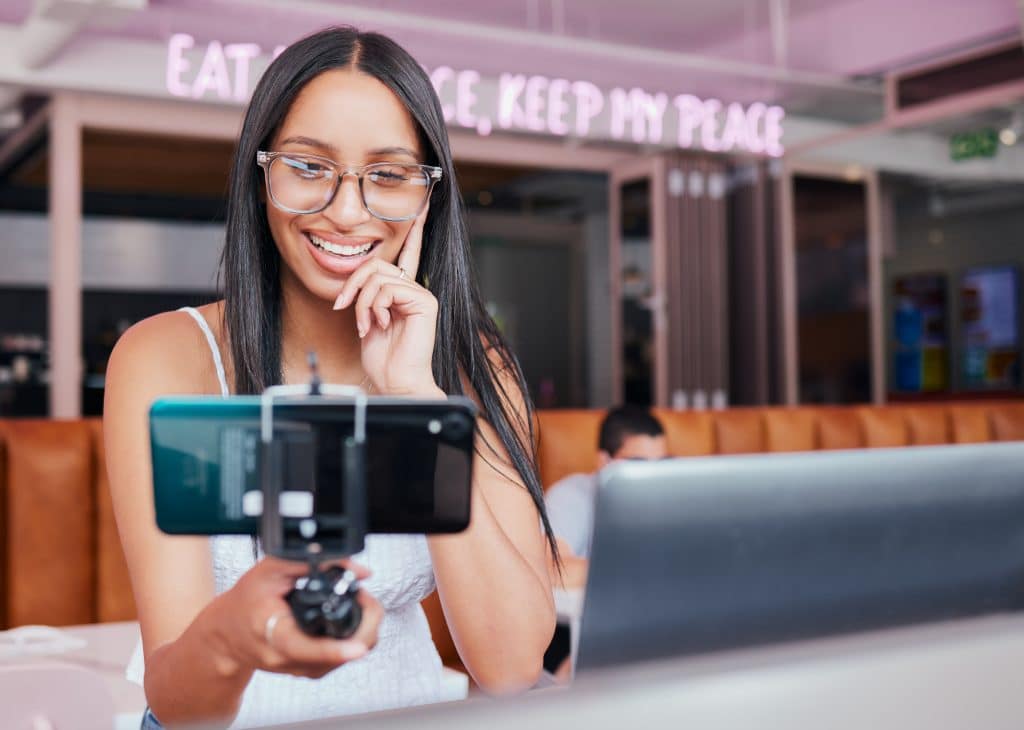
The term “social media influencer” has become quite the buzzword lately. But what does it really mean, and why the rising popularity?
Let’s talk about it!
Social media influencers are people who have become super popular on sites like Instagram, TikTok, and YouTube.
They build huge social media following and fans who love their posts. Influencers share photos and videos about fashion, travel, comedy. And other quality content their followers care about.
Their followers feel like they “know” these influencers. They trust influencers’ opinions on what’s cool or what product or service to buy.
Smart brands notice influencers’ power. In recent years, more brands have been partnering with influencers to promote their business. The influencer tells their fans how great a brand’s product is. This helps the brand sell more because followers trust the influencer’s advice.
This guide reveals everything you need to know about social media influencers.
Here’s a sneak peek of what you’ll learn:
- Why influencing is getting popular
- How influencers get paid
- How to work with Social Media Influencers
You’ll even get tips to become an influencer yourself!
Let’s start with a more detailed explanation as we explore the world of these rising social media stars.
What is an influencer?
As mentioned earlier, an influencer is someone who has become famous on social media. They have built a big audience of fans who follow them. Influencers create content about their lives, interests, and opinions. They then share these through posts, photos, videos, and livestreams.
Each influencer focuses on a specific topic, like fashion, food, comedy, or dance. This is called their niche. Some examples include:
- A fashion influencer shares outfit photos and clothing haul videos
- A travel influencer posts about fun vacations and resort reviews
- A food influencer makes cooking videos and restaurant recommendations
Influencers seem like a friend you know closely. Their content gives a peek into their daily lives. Followers get excited to see what they post next. They feel invested in the influencer’s journey.
Influencers have some sort of magic powers over their fans. When they say a product is cool or recommend something, their followers listen. Brands want to work with influencers because of their power to impact what followers buy.
The key is influencers have built a big, loyal audience on social media. Their fans view them as an expert on a topic and trust what they say. This influence is very valuable.
What is influencer marketing?
Influencer marketing refers to when brands partner with influencers to promote their products or services. It’s a fairly new advertising strategy brands are using today.
42% of marketers believe influencer marketing delivers the best ROI, and 89.2% say it is highly effective.
First, brands find influencers who are popular in a topic they want to advertise. For example, a clothing brand finds fashion influencers.
Next, the brand pays the influencer or gives them free products. In exchange, the influencer talks about the product to their followers. They post photos, videos, or stories highlighting the product and saying how great it is.
This helps the brand because social media followers trust the influencer’s opinion. When an influencer they admire says the product is cool, fans listen. They are more likely to buy it.
Influencer marketing works well because it seems natural, not like an obvious ad. Followers feel like they are getting a real recommendation from someone they like. Brands tap into the influencer’s reputation and audience to meet their marketing objectives.
When done well, influencer marketing makes brands seem trendy and drives massive sales for products and services.
What does a social media influencer do?
An influencer’s main job is creating social media content for their fans. Their niche and audience interests guide what type of content they make and post.
Here are some things influencers commonly do:
- Post photos on their social media page showing their lifestyle, products, outfit ideas, recipes, etc. They use captions to engage followers.
- Record YouTube videos like makeup tutorials, trying viral challenges, unboxings, day in my life vlogs, and more. Fans love video.
- Make short, funny, or informational TikTok videos on topics followers care about. These spread quickly.
- Write blog posts to share tips, experiences, and detailed thoughts related to a particular niche.
- Go Live on Instagram or Facebook to chat directly with followers in real-time. Fans feel a connection.
- Tweet opinions, observations, and commentary about their industry, events, etc.
Influencers also constantly interact real-time with followers. They like comments, respond to questions, and pay attention to feedback. This relationship with their audience is key.
Influencers work hard to pump out content their niche fans will enjoy. And they do that consistently. Their large, loyal audience and content are what make them valuable to brands.
Types of social media influencers
Social influencers are not created equal. There are different categories and tiers based on factors like audience size, content style, and overall vibe.
By Follower Numbers
Influencers are often grouped into tiers based on the size of their audience:
- Nano influencers usually have 100 – 10,000 followers. Their audience is small but targeted.
- Micro influencers have 10,000 – 100,000 followers. This is a mid-size, niche audience. They have expertise in a particular field and are often regarded as industry experts.
- Macro influencers have 100,000 – 1 million followers. Their audience is starting to become more mainstream.
- Mega influencers have over 1 million followers. At this point, their audience is quite broad.
- Celebrity influencers are household-name stars like singers or actors. They have the largest audiences.
More followers means wider reach, but smaller influencers could have high engagement in their niche.
By Content They Create
Social media influencers create high-quality content around specific topics.
- Lifestyle influencers give an inside look at their everyday lives and interests.
- Beauty influencers focus on makeup, fashion, skincare, and style trends.
- Travel influencers share destinations, hotel reviews, trip tips, and more.
- Food influencers post recipes, restaurant reviews, cooking tips, and foodie experiences.
- Fitness influencers discuss exercise regimens, nutrition, wellness products, and more.
There are also gaming, photography, parenting, and countless other niche influencers that can create content around. Of course, the content must be tailored to the specific audience’s interests.
By Their Level of Influence
Some influencers aim to inspire, while others take a more everyday relatable tone.
- Aspirational influencers showcase glamorous lifestyles and success stories. Followers look up to them.
- Educational influencers teach their audience valuable skills and lessons through their content.
- Relatable influencers build connections through sharing common experiences and a down-to-earth approach.
Brands choose influencers who convey the right tone, from prestige to accessibility. Their style of influence differs.
How to Become a Social Media Influencer
Do you want to become a popular influencer? It takes strategy and hard work, but anyone can build an influencer brand. Following these key steps can help you realize your dream of becoming a Social Media Influencer:
Choose Your Niche
Pick a specific niche you love and can create content for. You could go with fashion, cooking, comedy, sports, dance, etc. Make sure it’s something that can catch the interest of lots of people.
Find Your Target Audience
Get very specific about who you want to reach with your content. Figure out your ideal fans’ age, location, interests, and values.
Create Your Personal Brand
Come up with your influencer name and look. Design a logo, color scheme, etc., that fits your niche. Show your personality through your posts.
Make Great Content
Post amazing photos, videos, and blogs consistently around your niche. Post frequently to keep fans engaged and coming back. You should be a good content creator if you want to be a successful influencer.
Interact with Your Followers
Reply to comments, ask questions, and build real relationships with your audience. Making connections is key.
Grow Your Social Following
Organically gain more followers by promoting your account. You can also partner with similar influencers to share your best content with their audience.
Track Your Performance
Look at follower growth, likes, and engagement. Use this data to guide what your audience responds to best.
Collaborate with Brands
Work with brands that fit your niche. Make sponsored posts and partnerships that align with your brand values.
Building an influencer brand takes lots of steady effort but can be very rewarding. Stick with it!
How many followers do you need to be a social media influencer?
There is no magic number of followers you need to be considered an influencer. Even just 1,000 truly engaged followers can make someone an influencer.
Most big brands look for influencers with at least 10,000 followers before doing a paid partnership. Micro-influencers with 10,000 -100,000 followers can be a great fit for many brands.
But don’t just focus on getting more and more followers. It’s more important that the followers you have genuinely like your content and listen to your opinions. Fake or bought followers don’t help.
Some nano- and micro-influencers have smaller numbers of social media followers but get super high engagement. That’s because their niche is very specific. Those real connections mean more than millions of followers who don’t engage.
So, while more followers definitely help, it’s not the only thing that matters. Building genuine influence with a tightly focused audience is key, even if that audience is small. Great content that resonates drives real impact.
Do influencers pay for followers?
Some influencers do buy fake followers or use “bots” to try to boost their numbers. But most real, successful influencers grow their audience organically.
Fake followers don’t actually watch the influencer’s content or buy anything they recommend. They just add to their vanity numbers.
Brands can tell when an influencer has fake followers because the engagement is low. Their posts don’t get many real likes or comments compared to their high follower count.
Influencers with authentic audiences put in the work to make great content consistently that speaks to their niche. This earns them real followers over time.
Focusing on fake followers instead of engaging with a real audience won’t help you become a successful influencer in the long term. Brands value quality over quantity.
Genuine influencers got to where they are by staying patient, working hard, and connecting with their community. There are no shortcuts if you want real impact.
How does an influencer get paid?
Top social media influencers make big money from their audience. Here are the main ways influencers get paid:
- Sponsored posts – Brands pay them to make posts about their products. The influencer tells followers how great the product is.
- Affiliate marketing – Influencers share special promo links. They earn a commission when followers buy through their links.
- Selling products – Many influencers create online shops to sell their own merch, online courses, ebooks, and more.
- Ads – They display ads on YouTube, websites, etc., and earn money when the ads are viewed.
- Brand ambassador deals – Big long-term deals to be the face of specific brands.
- Platform partnerships – YouTube, Instagram, etc., pay top creators a cut of the ad money their content earns.
Successful influencers don’t rely on just one way to make money. They diversify across these opportunities.
Their power to get followers to click, purchase, sign up, or take other actions makes influencers valuable to brands for promotions. Their influence earns them money.
How much are influencers paid?
How much an influencer gets paid depends on their follower size, engagement, and the platform they use. Here are some examples:
- Nano-influencers with just 1,000 followers may charge $30 – $150 for a post. Their audience is small but targeted.
- Micro-influencers with 10,000 -100,000 followers typically charge $150 – $500 to make a post. Brands love their niche engagement.
- Macro-influencers with 100,000 – 1 million followers may charge $1,000 – $20,000 for a post. Their audience is larger and more mainstream.
- Mega-influencers with over 1 million followers could earn $25,000+ per post. They have a massive reach.
- Celebrity influencers like singers or actors charge huge amounts – sometimes over $500,000!
Now don’t take these average rates as gospel – influencer fees are never set in stone. The niche, content type, partnership length, negotiation power, and performance metrics like video views all impact pricing.
A bigger follower size usually means more money per post, but engagement and audience quality also matter.
Some top social media influencers (By Total Followers on Instagram, Facebook & TikTok)
Let’s talk about some top influencers who have large followings on social media platforms like Instagram, Facebook, and TikTok.
- Cristiano Ronaldo – Soccer star with over 600 million followers.
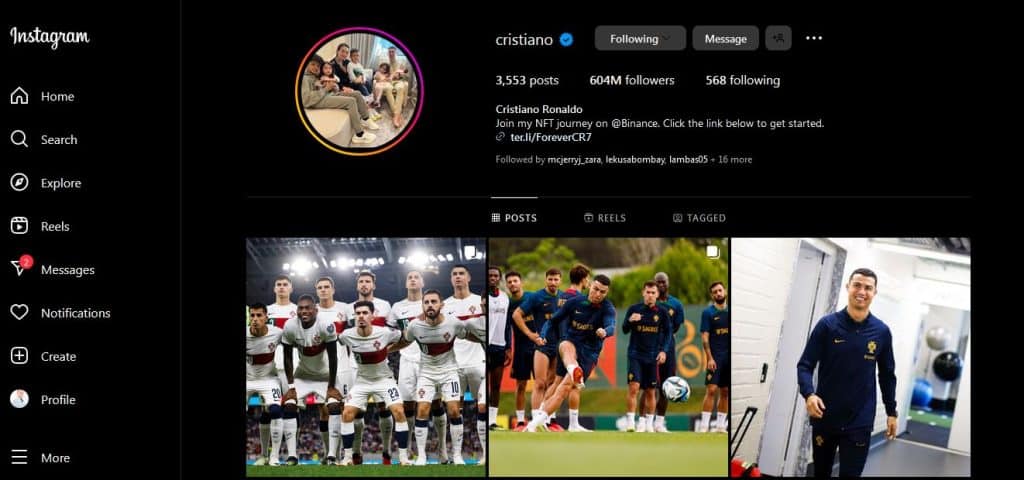
- Charli D’Amelio – TikTok star with over 151 million followers.
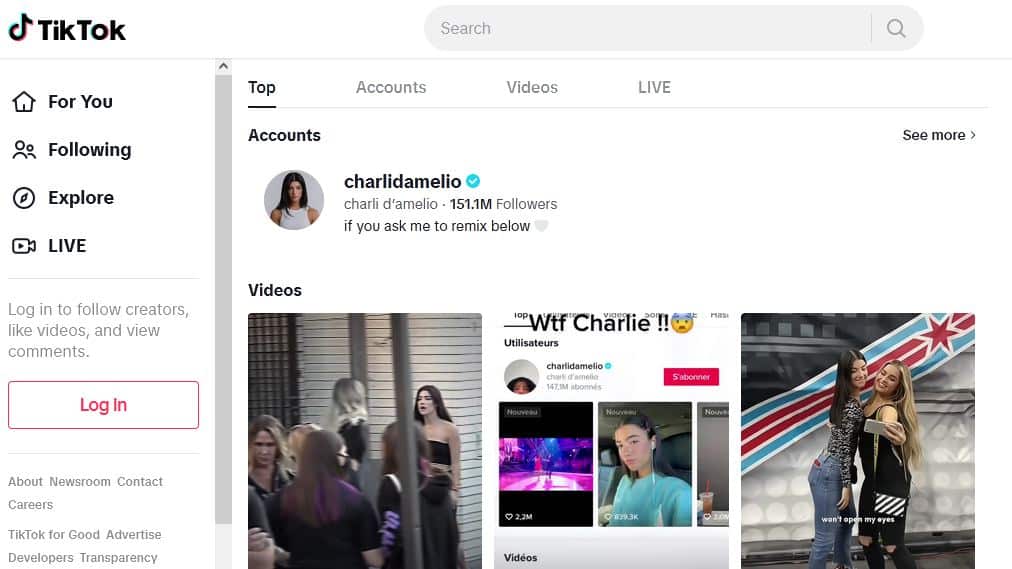
- Selena Gomez – Singer with over 400 million followers.

- Will Smith – Actor and Rapper with over 116 million followers.
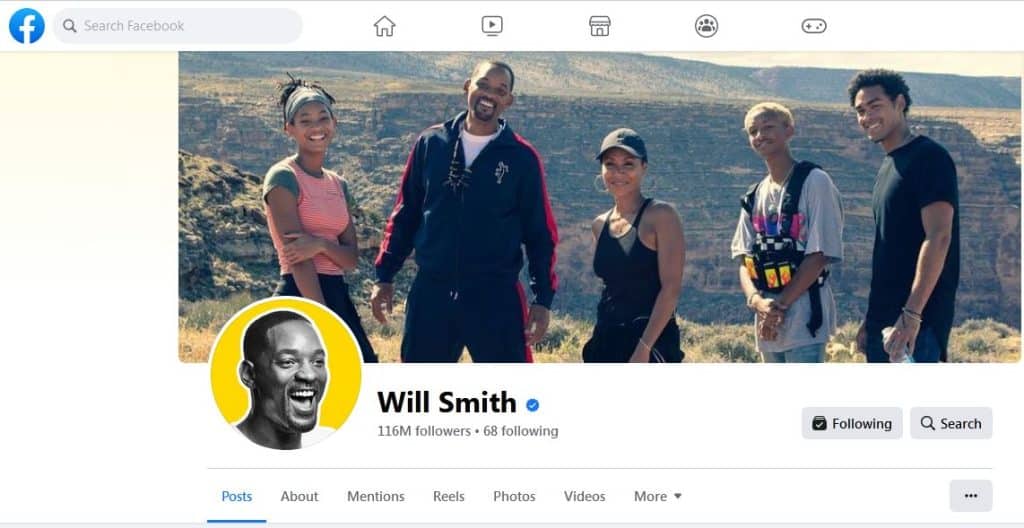
These mega-influencers have huge audiences and get paid millions to partner with brands. But micro-influencers can still be successful in their niche even with smaller followings.
Why is influencing is getting popular
Here are some key reasons influencing is getting more popular:
- Relatability – Influencers seem more real and accessible than traditional celebrities. Followers on their social media pages feel they know them closely.
- Targeting – Their niche focus lets brands appeal to specific groups. For example, a food influencer reaches only foodies.
- Engagement – Followers identify and engage with influencers’ content. They care what influencers post.
- Accessibility – Anyone can try to become an influencer thanks to social media. You don’t need connections.
- Cost – Partnering with micro-influencers provides cheap promotions compared to big celebrity deals.
Younger folks who grew up using the internet feel like influencers are part of their community, not outside advertisers. That feeling drives authentic engagement. It makes influencer marketing quite powerful compared to traditional ads.
72% of Millennials and Gen Z say they follow influencers on social media.
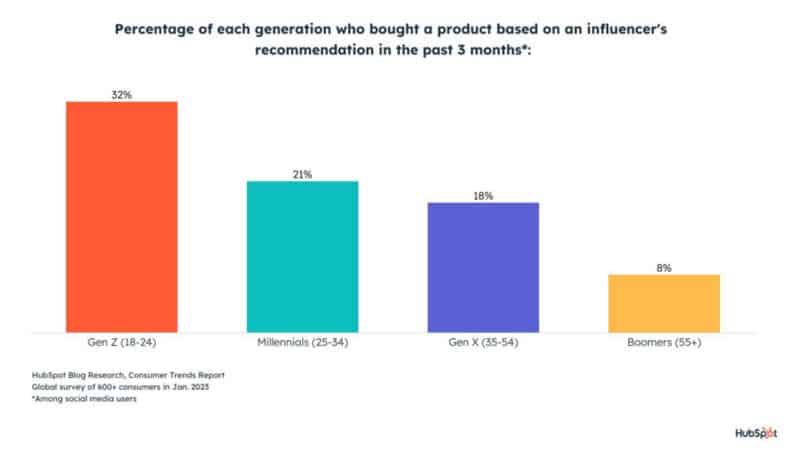
Influencers have changed digital marketing forever. Their impact continues to grow.
What is the difference between a social media influencer and a social media marketer?
Influencers and social media marketers both work on social media sites. Here are the most significant differences between them:
Influencer
- Uses their own personality to influence people
- More casual tone focused on their niche
- Paid for brand sponsorships and posts
- Cares about engagement and followers
Social Media Marketer
- Promotes brands as their job
- Uses brand’s formal messaging
- Paid a salary by the brand
- Cares about metrics like sales
An influencer tries to influence with their reputation. A marketer does promotions and makes posts on behalf of a brand in a professional way.
Influencers feel real and more relatable to regular people. But they both help brands succeed on social channels in different ways.
How to Create a Successful Campaign with Social Media Influencers
Want to use influencers to promote your business? Collaborating with influencers could be beneficial for you. Here are some tips to boost your chances of success:
- Set clear goals – Decide what you want to achieve, like more sales or brand awareness.
- Find the right influencers – Find ones whose audience and niche fit your brand.
- Discuss expectations – Talk about timelines, content guidelines, usage rights, pay, etc.
- Make a content plan – Work together to brainstorm creative post ideas.
- Give promotional assets – Provide discount codes or free products the influencer can share. and
- Amplify reach – Have influencers post across platforms and re-share their posts.
- Track performance – Use links and codes to see engagement, clicks, and sales.
- Build relationships – Treat influencers as real partners, not a channel of ad promotion.
With clear goals and the right partnerships, your influencer campaign can succeed!
What Social Media platforms are most popular for influencer marketing?
Certain social media sites are hot spots for influencer marketing. Popular influencer marketing platforms include:
- Instagram – This very visual platform is great for lifestyle content. It has a great number of young audiences.
- TikTok – Popular for short, fun videos. It’s trendy and reaches younger demographics.
- YouTube – Leading for long video content. Enables lucrative creator monetization.
- Facebook – Still has a massive audience, especially among older social media users not on TikTok or Instagram.
- Snapchat – Discover feature offers unique video ad options. The audience here is very engaged.
The platform of choice depends on the influencer’s audience, content format, and campaign goals. Influencers tend to be most active on visual platforms like Instagram, TikTok, and YouTube.
These platforms allow them to showcase their expertise through video and photos. They make influencer marketing easy and effective.
How influencers are impacting social media marketing
Influencers have changed social media marketing in big ways. Here are the major ways they are impacting it:
- Their posts seem more natural than regular ads. Followers trust them.
- They let brands target specific niche audiences well.
- Their connections with followers mean more engagement and sales.
- Brands reach new audiences through influencer’s followers.
- Brands seem more relatable by linking with “real” influencers.
- Influencers make creative, tailored content for each social platform.
- Their analytics help brands make smarter marketing choices.
Brands that team up with fitting influencers in their niche get great benefits. In many areas, influencer marketing is now the main strategy.
Conclusion
Hope you had as much fun reading this influencer guide as we did putting it together 🙂
The power and popularity of influencers are only growing. Their impact on trends, buying decisions, and the entire marketing industry keeps increasing.
However, influencer marketing may not make sense for every brand’s goals. Our marketing team at AdvertiseMint can help determine if paid social ads are a better fit to reach your target customers.
We’ve helped many business owners surpass their marketing goals using our advertising expertise on Facebook, Instagram, TikTok, and Snapchat.
We’d like to do the same for you. And it begins with a free 30-minute consultation.
Click here to book a FREE CONSULTATION with one of our social ads experts.
